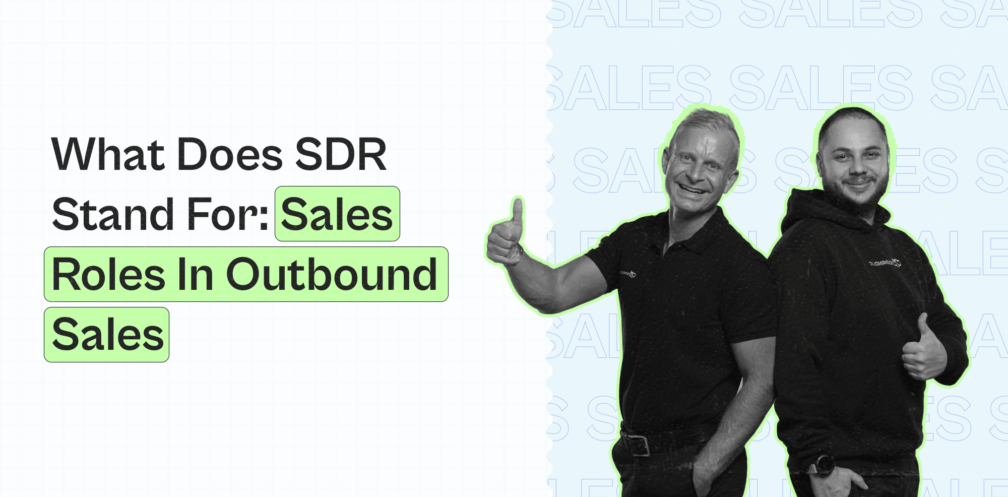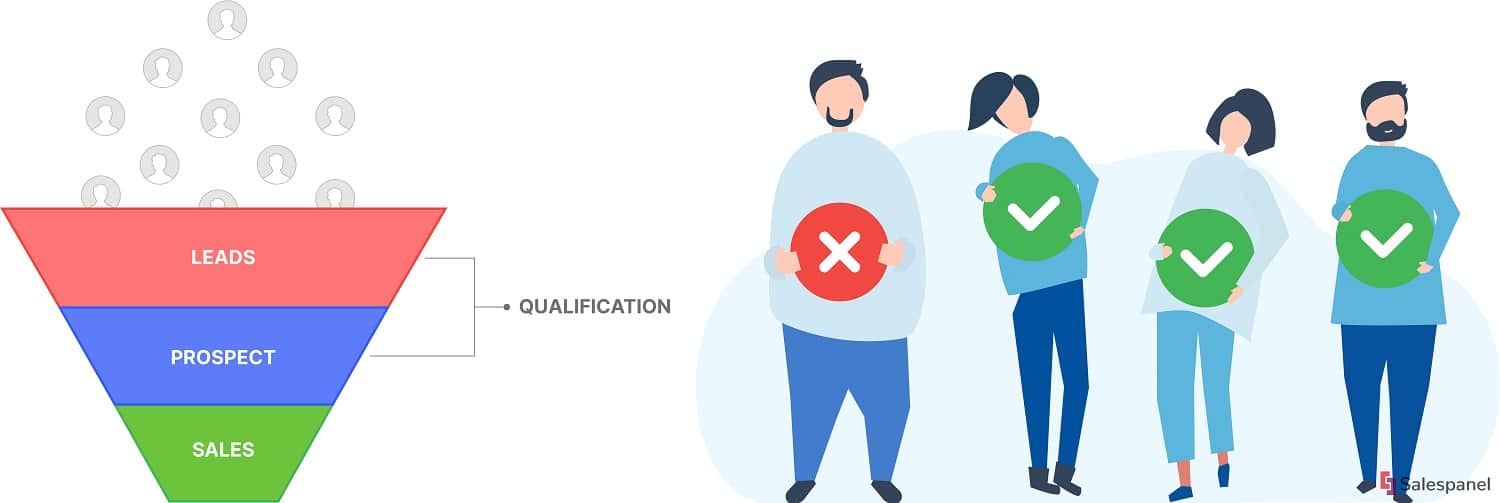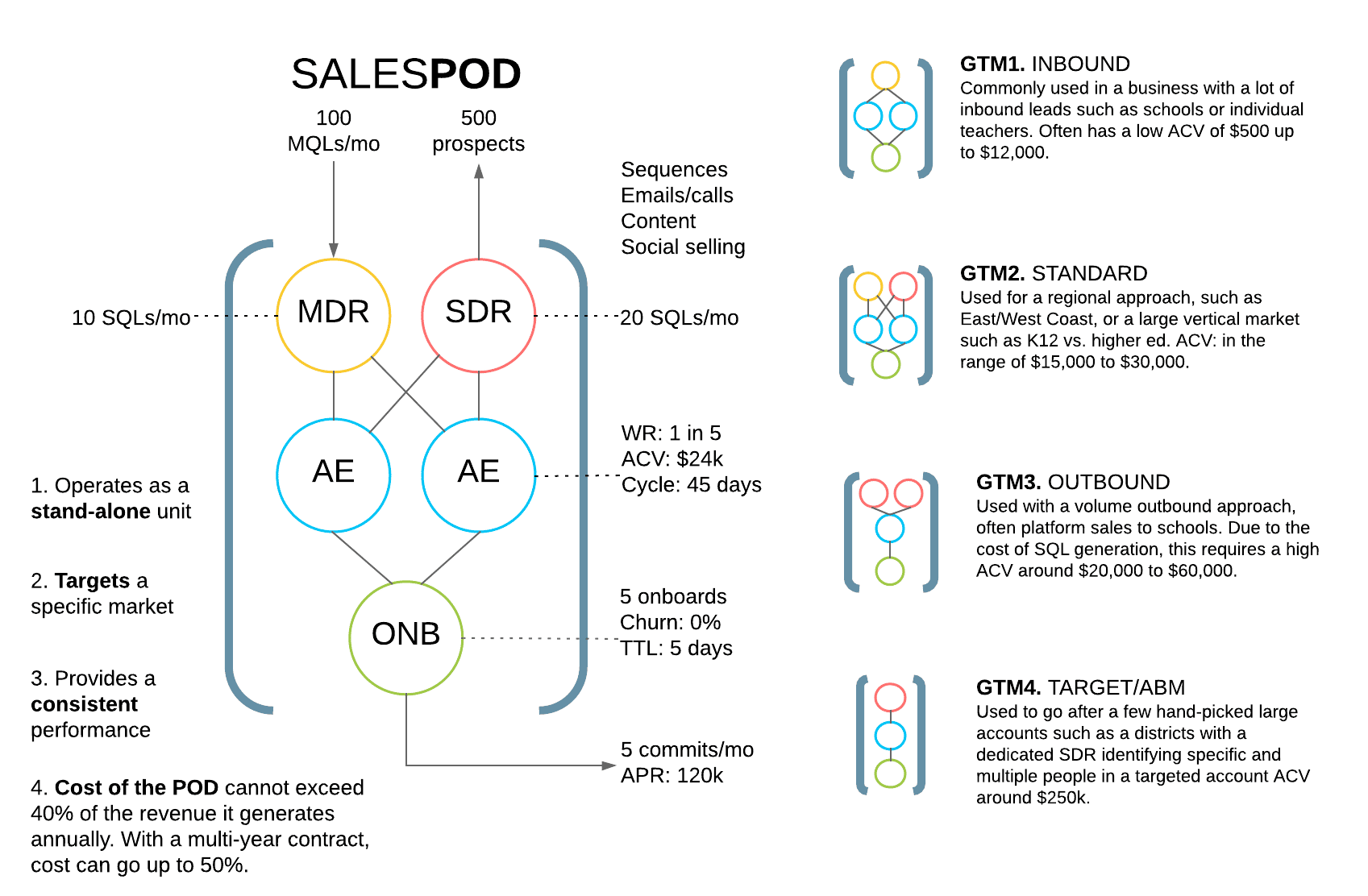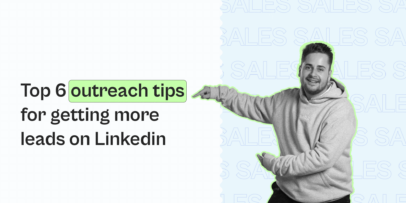What Does SDR Stand For: Sales Roles In Outbound Sales

Investing in a strong sales team is one of the best ways to grow your business.
It’s like the foundation of your house. Without it, you can’t build it up.
The way you structure your sales team and how you handle your leads have a long-lasting effect on your success.
Today, we’re going to tell you all about SDRs as they play an important role in any sales team. Below, we’ll prove this in detail.
Wondering how to structure your sales team? When do you have to hire SDR? And how should you measure their success?
By the end of this guide, you’ll have a much better understanding of what you should be focusing on.
Here’s what we’ll cover:
- What Does A Sales Development Representative (SDR) Stand For And Why Is The Role So Important In Outbound Sales?
- When Should You Hire An SDR To Boost Your Sales Process?
- 2 Main SDR KPI To Measure Their Performance Across Your Sales Pipeline
- How To Build Your Sales Team For Success Based On The POD Model
But before we get started…
Are you in our private Facebook group, the LinkedIn Outreach Family yet? In it, we cover the latest, most up-to-date sales tactics as well as proven outreach campaigns. Down to the exact sales templates use. Be sure to join and say ‘hi’!
Now, let’s get started!
What Does SDR Stand For And Why Is The Role So Important In Outbound Sales?
So, if you work in online sales or business, chances are, you’ve come across the term SDR.
Wondering what SDR stands for?
A sales development representative (SDR) is an inside sales rep that focuses on:
- outreach, prospecting,
- lead nurturing with an email sequence,
- and lead qualification.

However, SDRs are not responsible for closing deals.
They dive into prospecting filings, look into ideal customer profiles and different buyer personas, and evaluate the fit of those personas and individuals to be sales prospects.
If a person has great potential to be a prospect, the SDR should then move it to the next step in a sales pipeline and pass it to the account executive (AE). We’ll tell you more about this role in detail below, so, keep on reading!
So, essentially, they are the launch pads for sales projects.
The SDR role is a very valuable position in any company.
The person shouldn’t just have a good knowledge of the prospect industry, but also have a sense of self-processing competition, and a general understanding of how to use your tech stack.
After all, they’ll be responsible for correctly identifying prospects and the best way to engage them.
Done well, the right sales deal could double, or even triple your business.
In most companies, the responsibilities of an SDR include:
- Seeking new business opportunities in the market.
- Contacting prospects through cold calls or emails, or LinkedIn messages to engage targeted accounts.
- Qualifying outbound or inbound leads as sales opportunities.
- Identifying the lead’s needs in order to suggest the relevant product or service.
- Building a relationship with prospects and engaging with them without direct selling.
- Nurturing potential clients that aren’t ready to buy yet and further educating them on your product or service.
- Managing, tracking, and reporting on all activities and results using their CRM solution.
And the basic SDR toolset often includes:
- CRM (customer relationship management) software to track the status and position of leads across their sales journey.
- Automated outreach tools like Expandi to automate the cold outreach process via Email and LinkedIn.
- Calendly to book online appointments in two clicks.
- Vidyard to create personalized videos for more trusting communication.
Another important role you should know about is the account executive (AE).
What is an account executive (AE) role?

The account executive position is there to track prospects’ journey through the full sales cycle across your pipeline.
Typically, they help find outlining intent, understand prospect challenges, and highlight those that provide the solution related to the company’s product or services.
While SDRs focus on outbound lead generation, B2B prospecting, and lead qualification, account executives are responsible for closing deals.
So, without the SDR’s qualifying process, the sales cycle might take much longer.
SDRs are important to any company.
But are they a business priority for you right now?
Let’s take a look.
When Should You Hire An SDR To Boost Your Sales Process?
In fact, one of the most important steps for setting up a successful sales org is getting the right team in place. Read on for a more detailed breakdown of the sales POD structure below.
But before we answer the “When” part, keep in mind the success of SDRs isn’t measured by sales won, but by activities like sales calls and meetings booked. We’ll also cover the exact SDR KPIs below!
So, when should you consider hiring SDRs to boost your sales processes?
Essentially, in early-stage company days, all sales roles can be temporarily combined by the only person in the sales department (for example, the founder). Obviously, at this stage, you don’t need an SDR position.
When a large number of leads appear in your sales pipeline, you should then focus on growing your sales team. When your team is growing you can start thinking about adding SDR positions within the team.
What is the ideal moment for SDR hiring?
The sales roles should be separated into SDR and AE roles if the sales manager is spending a lot of time nurturing leads and forgetting to communicate with warmer leads in the later stages of the funnel.
Or, even more likely, if the sales manager doesn’t have enough time for nurturing and communicating with cold leads – spending their time only on closing deals.
So, the goal is to allow the SDR to focus on and hone in on the qualification aspects, which enables them to succeed in a very focused area.
This way, the account executive will then be able to focus on a specialist area, enabling them to double down on handling objections and taking someone through those later stages of the sales process.
So, you know you need an SDR team when:
- Your sales representatives fail to follow up with prospects.
- The number of prospects decreased because sales reps focused just on closing.
- Your sales pipeline is filled with irrelevant leads.
- Your sales team isn’t cross-selling or up-selling.
If you’re wondering what makes a good SDR, you should be looking at their performance.
And to measure the performance of your sales teams, we’ll be looking at specific KPIs (key performance indicators).
Here’s what you need to know.
Two Main SDR KPIs To Measure Their Performance Across Your Sales Pipeline

Essentially, the main goal of setting KPIs is to track the success and impact the sales team has on the bottom line of your company.
Now, obviously, the single most important metric of any business has to do with its revenue.
However, tracking the direct correlation between your SDR’s activities to your revenue is not the way to go.
Here’s what you need to know and how to calculate the most important KPIs.
Lead to SQL (Sales-qualified lead) conversion
Here, the lead is a potential customer based on the ICP and buyer’s persona, but they haven’t opted in yet.
While an SQL (Sales-qualified lead) is a potential customer in the early stage of contact with your sales team or has expressed interest in your services or products.
This is where your lead qualification efforts should pay off, since, ideally, the lead be an ideal fit to convert if you’ve done your research.
So, the process of passing off a lead to a sales qualified lead is an important stage of the sale process. Because sending too many low-quality leads to sales can result in a low closing rate and poor sales efficiency.
Here’s what you need to know about this second metric.
SQL to SAO (sales accepted opportunity) conversion
Sales accepted opportunity simply means a new business lead a member of the sales team has accepted into the sales pipeline.
Usually, this is a well-qualified lead with an increased likelihood of closing successfully.
What does sales readiness look like?
To determine whether a lead is ready to be closed, you should look at factors such as:
- Is the information for this lead complete and accurate?
- Does the information align with the ideal customer persona?
- What is the lead score for the lead? Does it indicate a high level of interest or relevance?
- Is the lead genuinely ready for contact with sales? Or should SDR keep nurturing and engaging it?
Keep in mind what we described above is for outbound SDRs.
For inbound SDRs, the main metric is MQL to SQL – which simply means how many of your marketing-qualified leads become sales-qualified leads.
How To Build Your Sales Team For Success Based On The POD Model

As important as your sales KPIs are, it’s just as important to have proper sales infrastructure built in your company to help your SDRs succeed.
After all, your sales team structure is the ground foundation of your operations.
If the operations are weak, the entire sales process will suffer and you will not be able to scale.
So, the way you design your sales team is very important.
Below, we’re going to cover what worked for us as a SaaS company, and it’s called the POD model.
This is partly based on Jacco van der Kooji’s sales structure.
And before we discuss the actual sales model, there are 2 other sales structures you need to know about:
Assembly line model

This is one of the most common sales structures.
The assembly line breaks down a sales team into 4 different groups:
- Lead generation team.
- SDRs.
- AE.
- And the customer success team.
In this model, everyone has their own set of responsibilities and by specializing your sales team, it becomes much easier to isolate bottlenecks in your sales funnel.
Each step of the sales cycle has a dedicated team and as the customers go through the funnel, they’re passed to the next team – from the lead generation prospect to a new customer for the customer success team.
The island structure

Another straightforward sales structure.
In this model, there is an owner or a manager (e.g. VP of sales or sales manager) at the top who oversees multiple sales reps.
Then, each sales rep is individually responsible for each stage of the sales process, from lead generation to closing.
This is the most common sales structure in the finance and real estate industries.
The POD model is essentially a combination of the above sales models. Here’s how it works.
How the POD sales structure works

This sales model includes both the MDR (marketing development representative) and SDRs.
The SDR is responsible for outreach while the MDR handles inbound. While both of them are responsible for lead qualification.
Then, the marketing and sales qualified leads to go to the account executive (AE).
Used primarily by large business organizations, one of the biggest advantages of the POD model is that it divides sales teams into smaller groups.
At the team level, the structure works similarly to the assembly line model, in which each member of the group plays a specific role. But instead of one large sales team, there are multiple groups (pods), each tasked with selling to a particular set of customers.
Then, as the company evolves, the sales team gets bigger and if necessary, a business development representative (BDR) is brought in.
Conclusion
Hopefully, by now, you have a better understanding of outbound sales and how to get the most out of your SDR teams.
Building out your sales pipeline takes time. But with the right sales structure and foundation within your company, you should have a much easier time scaling.
As you structure your sales team, the most important part is finding the right fit that will rive the results you’re looking for.
So, in addition to setting the right sales KPIs, you should also have the foundation for your sales structure so that you can create a highly flexible, agile sales team. A team that’s ready to meet a variety of challenges, communicate with other departments quickly, and efficiently pounce on new opportunities as needed.
Now, if you’re looking to start reaching out to your leads in a smart, and efficient way, consider Expandi.
With Expandi, salespeople and business owners reach their leads in an automated, omnichannel way. This is ideal if you want to automate your prospecting, follow-ups, and making sure your leads reply to your social selling messages.
Get started with a free, 7-day trial now!
Alternatively, if you’re looking for proven sales strategies, down to the exact templates to use, be sure to join our private Facebook group, The LinkedIn Outreach Family!
You’ve made it all the way down here, take the final step


